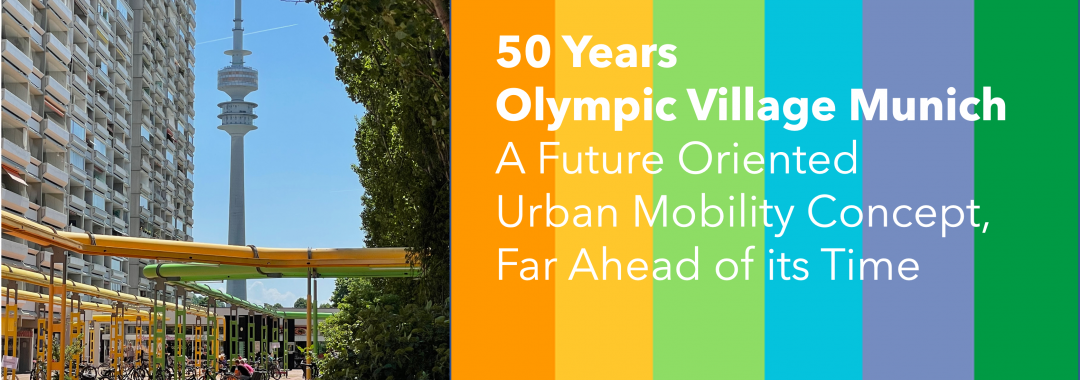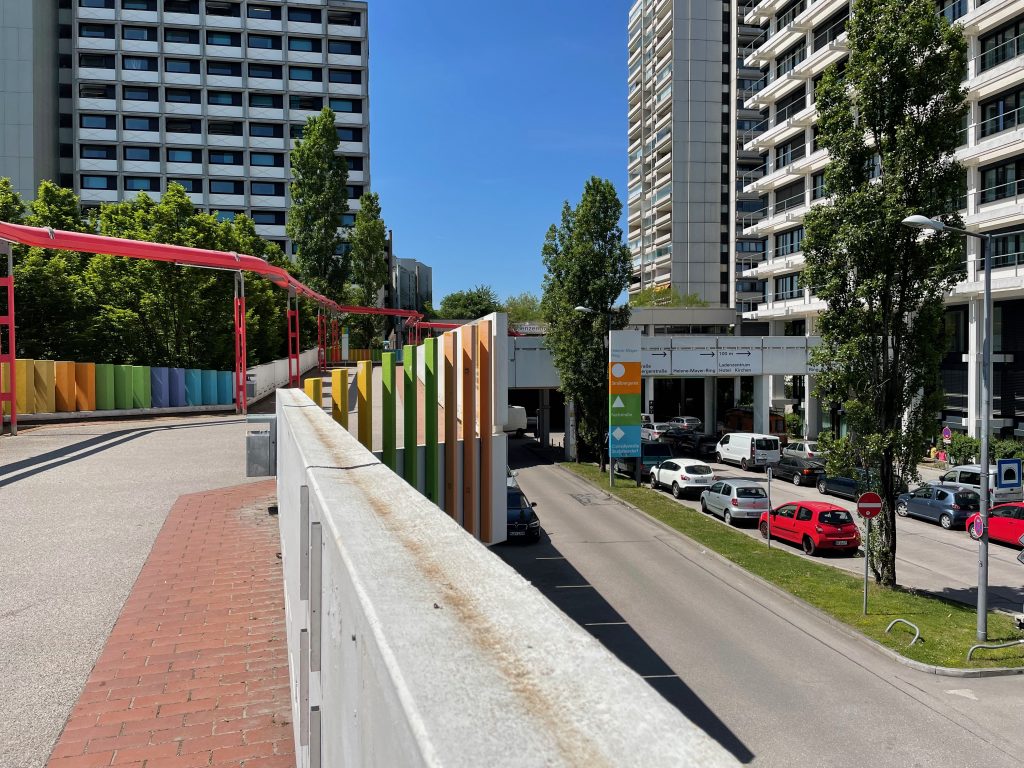
Split Level Access to the Olympic Village
2. Everything in Reach
Various kinds of shops, schools, medical supplies, restaurants, and public socializing areas as well as a church are available in walking distance within the village, reducing primary mobility needs for the residents dramatically. The Olympic Parc with all its sports and event facilities can be directly accessed and serves as an extended recreational area, always good for a walk or run.
At the same time, direct access to the subway and local busses connects the Village conveniently to the rest of Munich and the world.
So, while today we discuss the vision of the 15-Minute City, the Olympic Village was already the 5-Minute City 50 years ago.
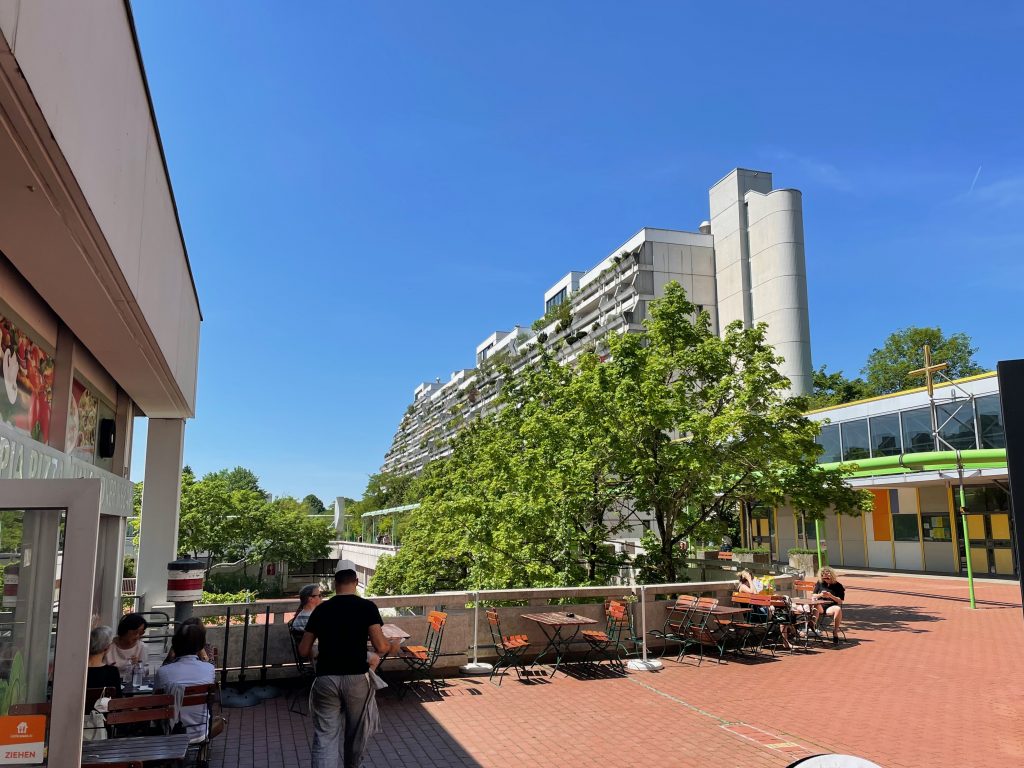
Life Together: Restaurant and Community in the Heart of the Village
3. Accessibility
Barrier-free concepts were all but the rule 50 years ago. The Village however, with its wide ramps, handrails and elevators was designed from scratch to make everything accessible without steps. Thus, the Olympic Village has always been a preferred place to live for wheel chair users while this accessibility makes it very convenient for cyclists, strollers, or walkers too.
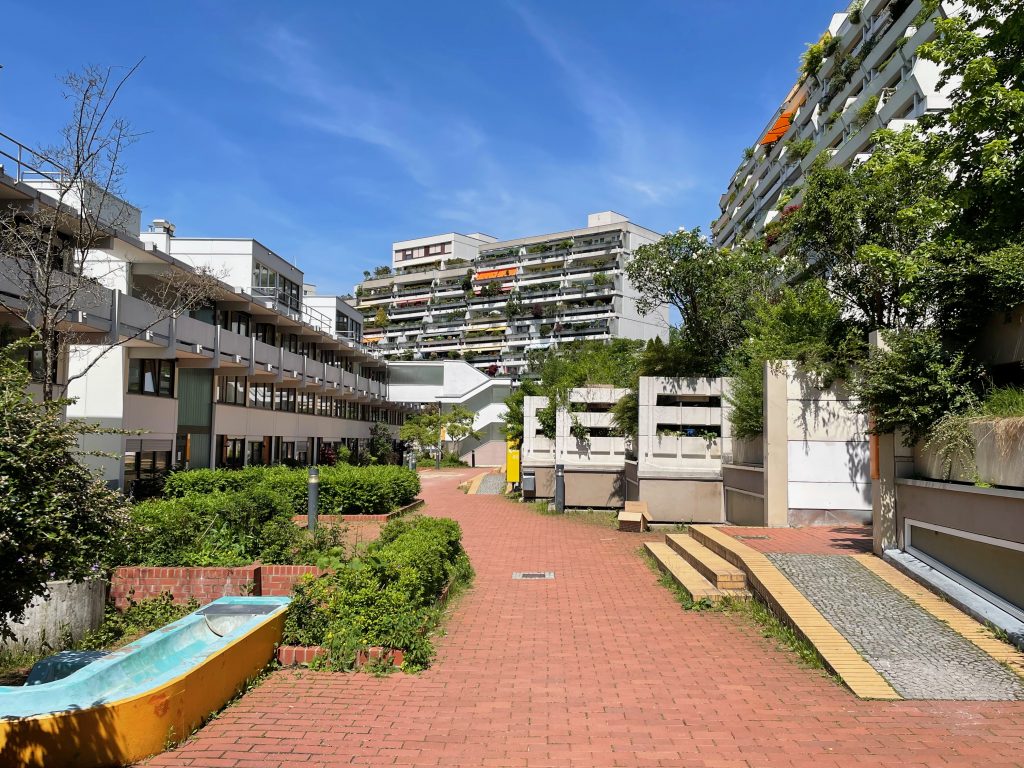
Acces Ramps on Upper Level in Strassberger Strasse
4. Livability
Apart from all these rather factual criteria, the heart of the early architectural concept was making it not another depressing concrete apartment block but a place people would love to live in. How successful this has worked out can be seen and felt until today. The plants and trees you see everywhere make it green oasis. Various socializing areas and pieces of artwork are distributed all over the Village, bring people together, and create a truly livable and lovable neighborhood.
As cyclists were mentioned above: What I find absolutely remarkable, is the harmonic way pedestrians and cyclists have always shared their way in the Village. Without a lot of formal routing measures or regulations, there has never been a lot of problems from pedestrians and bicycles using the space on the upper level together. In fact, there is something like an undocumented code of conduct based on mutual consideration, that makes them getting along well.
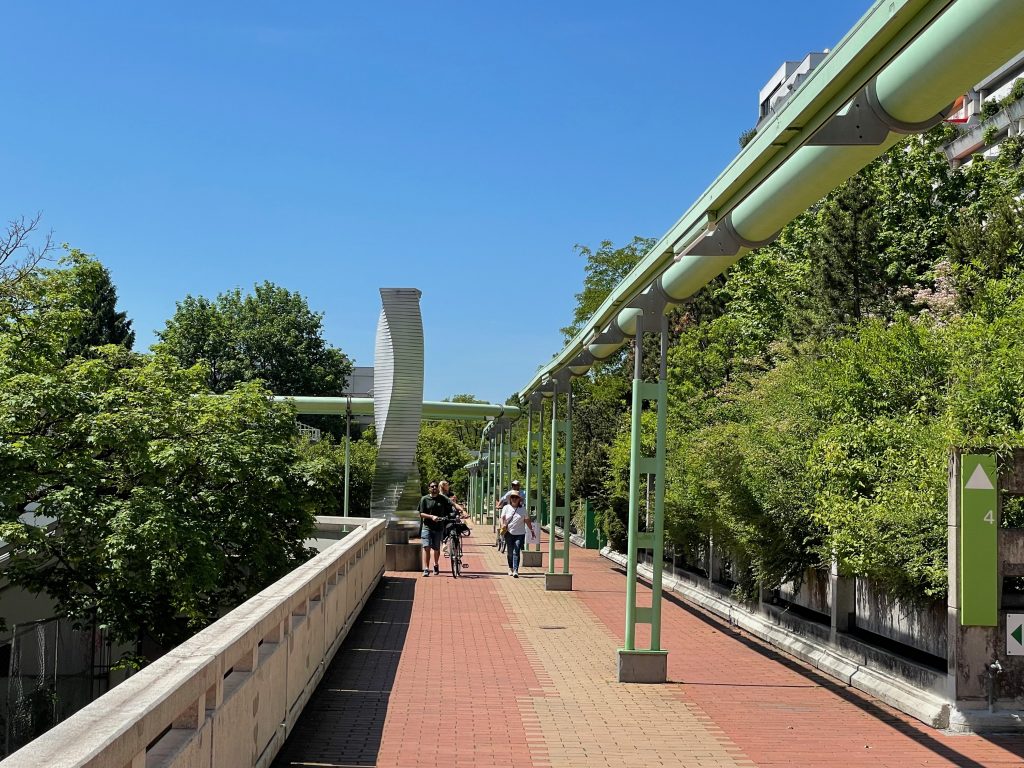
Trees and Artwork in Nadistrasse
Downside
Is there a downside? Yes, but one you would’t see at first glance. In a settlement of this size with thousands of people living together, clear rules and responsibilities are needed. However, the contracts made in 1972 for the utilization of the Olympic Village after the games were just peppered with flaws, which put badly needed restructuring measures on hold for decades, waiting for courts to decide who would have to pay for it. When e.g. the concrete structure below the pavement had to be renewed, it took the courts about 15 years to decide which part of it belonged to the upper level walkway (and as such to the the privately owned buildings on its side) and which belonged to the public streets (owned by the city) it covers.
Last not least: Celebrating the 50th anniversary of the Olympic Village is not possible without also remembering the terrible terrorist attack that took place there during the games. The lessons to be learned go far beyond mobility.
